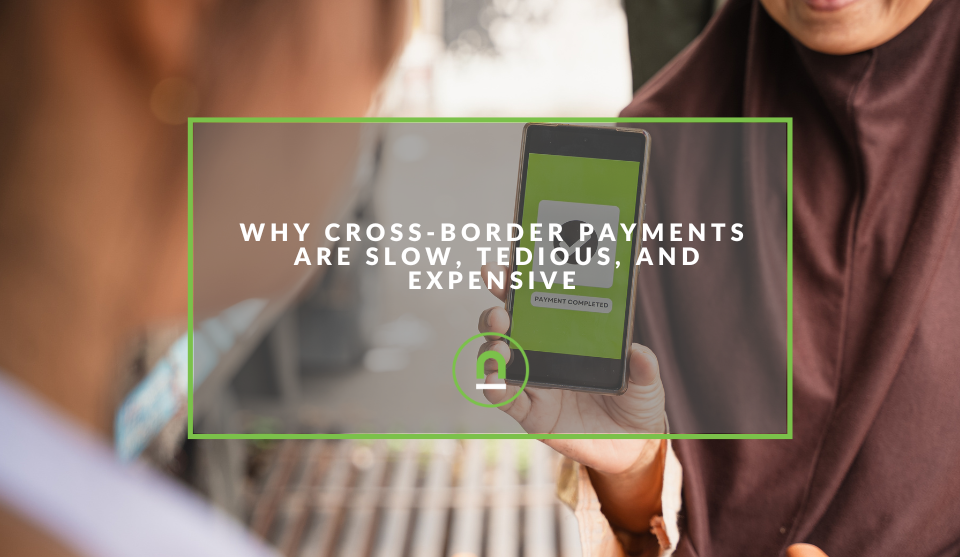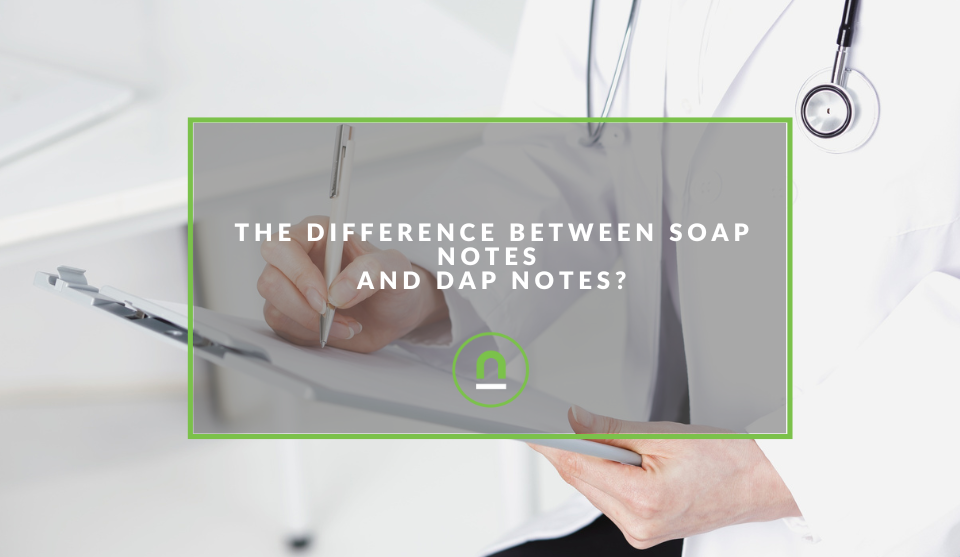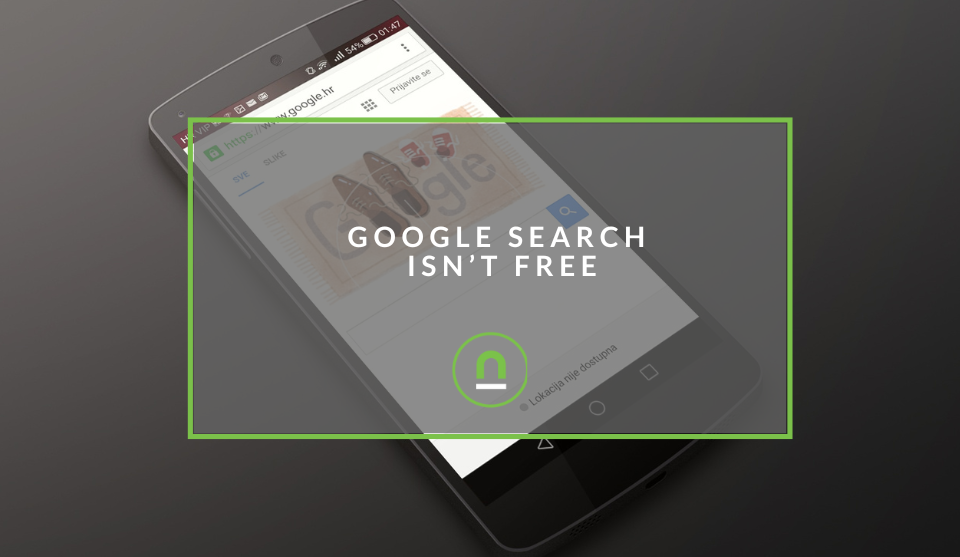Recent posts

Money Talks
Why Cross-Border Payments Are Slow, Tedious, and Expensive
17 December 2025

Money Talks
The Rise Of Trading Platforms In South Africa
16 December 2025

nichemarket Advice
The South African VAT Threshold Chokehold
05 December 2025

Doctors Orders
The Difference Between SOAP Notes and DAP Notes
02 December 2025
Popular posts
Extravaganza
Trending Music Hashtags To Get Your Posts Noticed
24 August 2018
Geek Chic
How To Fix iPhone/iPad Only Charging In Certain Positions
05 July 2020
Extravaganza
Trending Wedding Hashtags To Get Your Posts Noticed
18 September 2018
Money Talks
How To Find Coupons & Vouchers Online In South Africa
28 March 2019
Google Search Is Not Free
21 August 2024 | 0 comments | Posted by Che Kohler in nichemarket Advice
In the past few weeks, we've seen a bunch of legal drama surrounding everyone's favourite gateway to the internet; the search giant has been declared a monopoly by US regulators for holding on to 90% of the current market for search.
The outcome of this ruling remains to be seen, and I'm sure Google's legal team is hard at work coming up with a plan to protect its position as a market leader. The search engine, known for its advertising products, has consistently grown in revenue since 2001 without a single down year.
The company reached its latest peak in 2023 when it pulled in revenues of 237.86 billion US dollars. It's safe to say that in its current format, Google is as close to printing money as it comes, with its only rival being the Federal Reserve, which literally prints money.
But where does all this money come from if you're not paying to use the service?
When you type a query into Google's search bar, you might think you're using a free service, and to some extent, you are. However, behind the scenes, Google's search engine is a sophisticated revenue-generating machine primarily powered by search ads.
Understanding how Google monetises search through ads and how this affects costs for advertisers—and ultimately consumers—can shed light on the complex economics of the digital age and why, without competition in search, your cost of "Googling" might continue to rise.
The Basics of Google Search Ads
Google gives the end user a free product where you can freely type in any keyword or sentence you can think of, and it will try its best to spit out some kind of result to tickle your fancy; this is just there to get you used to the product and to feed Google data.
As you continue to use search, eventually, you're going to rely on it for commerce-related searches, so when you're done looking at memes, cat videos or stalking your crush, you'll likely want to buy something using the same search engine.
These commerce-related keywords are where Google makes its money, as brands bid for the top spaces when users type in any query remotely close to buying a product or service.
Google Search Ads, also known as Google Ads, is a cornerstone of Google's revenue model. When users perform a search query, these ads appear alongside or above the organic search results. Businesses pay to have their ads displayed, and this payment is based on an auction system that determines ad placement and cost. Here's a simplified overview of how Google Ads works:
1. Keyword Bidding:
Advertisers bid on keywords relevant to their business. For example, a travel agency might bid on keywords like "vacation packages" or "cheap flights."
2. Ad Auction:
When a user performs a search query that matches or is related to these keywords, Google runs an auction among advertisers who have bid on those keywords.
3. Ad Placement:
Ads are placed based on a combination of bid amount and ad quality, which includes relevance to the search query and the expected click-through rate (CTR).
4. Cost Per Click (CPC):
Advertisers are charged on a per-click basis. The cost per click can vary widely based on the competition for the keywords and the effectiveness of the ad.
How Google Increases Revenue Through Search Ads
Google's ability to monetise search is a result of several key mechanisms:
1. Competitive Bidding:
The auction system encourages businesses to bid higher for desirable keywords. As competition increases, the cost per click (CPC) for these keywords rises. Google benefits from this competition by receiving higher bids for premium keywords.
2. Quality Score:
Google uses a Quality Score to determine ad placement and cost. The Quality Score is based on the relevance of the ad to the search query, the landing page quality, and the expected CTR. Higher Quality Scores can reduce CPC for advertisers, but achieving a high Quality Score requires investment in optimising ads and landing pages. This pushes advertisers to spend more to improve their scores and maintain competitive ad positions.
3. Targeting and Retargeting:
Google's sophisticated targeting options allow advertisers to reach specific demographics and interests, increasing the effectiveness of their ads. Retargeting ads, which target users who have previously visited a website, often command higher CPCs due to their increased likelihood of conversion. Google's detailed targeting options drive up costs as businesses bid more to reach their ideal audience.
4. Ad Extensions and Features:
Google offers various ad extensions and features, such as site link extensions, callouts, and structured snippets, which enhance ad visibility and performance. While these features can improve click-through rates and ad effectiveness, they often come at an additional cost for advertisers.
The bidding auction, where the money-making happens
As advertisers compete for your eyeballs and, more importantly, your clicks, those wanting to bid for the same users have to square off in an action. The auction process happens with each Google search with ads bidding for a keyword, and Google gets to decide which ads will appear for that specific search and in which order those ads will show on the page (or whether or not any ads will show at all).
If Google ads auctions were only about who paid the most, brands with the biggest budgets could crowd out smaller brands, exhaust their budgets and once all competition has been cleaned out, the large brands could lower their bids and scoop up more traffic for a discount.
Google doesn't want this to happen, so it adds complexity and randomness to auctions.
According to Google, it has its own ranking system for ads, which uses a combination of metrics based upon the advertiser's bid, the Quality Score of their ad (CTR, ad relevance and landing page), as well as their ad extensions.
- Ad rank determines your ad position relative to other ads.
- Ad rank determines whether your ads will show at all.
Hence, a high bid with a low Ad Rank will not result in your ad being shown frequently. Furthermore, depending on the competitive landscape, it may not be presented at all.
But this is only half the story.
Google uses a Vickery auction method, which is a sealed-bid auction where bidders submit bids without knowing the bids of other people. However, as opposed to other sealed-bid auctions, the price paid is the second-highest bid price and not the winning bid price.
So why would Google not want to give the bid to the user that pays the most? Because it would give away the game too easily.
If we all knew that, we would all bid less, hoping to score the position and click.
With the second price auction, you're encouraged to push for the most comfortable CPC/CPA that your budget will allow, hoping to secure that click.
Now, there is nothing wrong with auctions for ad space; all platforms do this, but when it comes to Google, none of us has any idea of the floor price and how much inventory has been bid, and if Google sets its own pricing, that advertisers compete with instead of competing with one another only.
The secret sauce, or how much the house affects the auction, has always been up for debate, but you could still manage to work around it with changing campaign structure, bidding strategies, ad locations, frequency, timing and much more.
The manual refinements by a PPC manager with some degree of skill in securing the cheapest ad traffic, but Google has begun to erode their effectiveness, too.
Putting PPC in a black box with Performance Max
The dawn of generative AI has only encouraged Google to distance you from the auction; while PPC marketers of the past will tell you about the good old days when they could yank chains and pull levers that helped adjust campaign performance, the modern system of ad bidding becomes an increasingly passive exercise.
Performance Max, or PMax, as the kids call it, is the premier product backing the theory that Google knows best, and you should trust me, bro.
The new AI-powered ad campaign format is a spray-and-pray approach to digital inventory; once set up, you don't know what percentage of their budget went to Google media or the open web (monetised through Google's ad exchange - GDN) or whether they appeared at all in Maps, Gmail, YouTube or the Discover feed.
To top it all off, you also have no clue what kind of ad copy and creative were used; the AI models are doing all the work for you. PMax represents a massive, non-auditable pool of demand and content at Google's disposal.
Performance max is a black box; no one knows how it works, where you're bidding, who you're competing against or the quality of users you're targetting; you just assign the budget and hope for a positive ROAS. In a sense, it reminds me a lot of Sam Bankman-fried's explanation of the DEFI Ponzi schemes of 2021. You're putting money into this black box, and you're hoping to get more money out at a later date.
If we look at Google's constantly growing revenues and how it's making its bidding more opaque, then we have to assume the growth doesn't all come from increased advertiser interest but also increasing costs to advertise on Google's network and retain those same spots you had in previous years.
Once Google saw that the take up to PMax campaigns wasn't as high as they had hoped...the performance of traditional display campaigns mysteriously started tanking. They effectively forced us into using PMax campaigns if we wanted any performance from the display network- Kate Kuilman - PPC Specialist
The Impact on Advertisers
As the cost per bid rises, businesses face higher advertising expenses. Here's how these increased costs impact advertisers:
1. Higher Marketing Budgets:
To remain competitive, businesses may need to allocate larger portions of their marketing budgets to Google Ads. This can be particularly challenging for small and medium-sized enterprises (SMEs) with limited marketing resources.
2. Increased Cost of Acquisition:
As CPCs increase, the cost of acquiring a customer through Google Ads rises. Businesses must often adjust their pricing strategies or marketing spend to maintain profitability.
3. Efficiency and Optimisation:
To manage rising costs, businesses invest in optimising their ad campaigns, improving ad quality, and leveraging advanced targeting. While this can lead to more effective advertising, it also requires additional resources and expertise.
Passing the Cost to Consumers
If you're dealing with a brand that uses Google ads to generate leads, the business has to factor in the cost of reaching you and add it to their margins. If Google continues to charge more for ad space, the increased advertising costs businesses face will inevitably affect consumers.
Here's how:
1. Higher Prices:
Businesses may pass on the increased cost of advertising to consumers in the form of higher prices for goods and services. This is particularly evident in competitive industries where advertising plays a significant role in driving sales.
2. Reduced Value for Consumers:
As businesses bid more aggressively on keywords, the cost of acquiring new customers increases. This can lead to reduced value for consumers, as businesses might cut back on promotions or offer less competitive pricing to offset higher advertising costs.
3. Increased Competition:
The competitive nature of search ads can lead to increased prices across industries. For example, in highly competitive sectors like finance or insurance, where keywords can be extremely expensive, consumers may see higher prices as businesses attempt to recoup their advertising expenditures.
4. Poor Customer Service:
As businesses try to cut costs, they cut down on staff, as labour tends to be an increasing cost and opt for cheaper options like shorter time frames for speaking to an agent or forcing you to speak to a useless chatbot about your query. If you've ever sat on the phone to have an eCommerce order query or package returned, you'll understand the considerable waste of time and cost involved for both the brand and consumer.
5. Fast fashion and trend purchases:
Instead of trying to build a brand that produces high-quality products, ideally produced locally, where you can speak to someone who literally worked on the item and has the expertise, online stores are encouraged to cut costs, chase social media trends that spill over into search and import cheap pieces of crap products from some factory in China, to sell to you at a slight mark up. Ultimately, millions of purchases end up on the trash heap, with a lot of money wasted once those products hit the dump or collect dust in your garage after a few weeks or when they break.
There is no free lunch, EVER!
While Google Search appears to be a free service from a user perspective, its monetisation strategy through search ads reveals a complex economic landscape with plenty of downstream effects we've yet to fully understand. Google's auction system, competitive bidding, and advanced targeting features drive up the cost per click, benefiting Google's bottom line. Advertisers, in turn, face higher costs, which can lead to increased prices and reduced value for consumers.
As consumers and users of search, we have to understand that free always comes at a cost; it does so with government programs and with business monetisation strategies; you are always giving up something to get something; you just might not see it at first.
The interconnected nature of digital advertising and downstream consumer behaviour is still one where we've yet to connect the two, so Google can still pretend like their hands are clean, for now.
But while we figure it out as consumers, it might be time to change our behaviours as we are also part of this ecosystem.
So the next time you perform a Google search, remember that the convenience and speed of your results come at a cost, not just for advertisers but potentially for you as well.
Contact us
If you would like us to improve the performance of your paid search or want to know more about digital marketing for your business, then don’t be shy. We’re happy to assist. Simply contact us
Are you looking to promote your business?
Business owners can create their free business listings on nichemarket. The more information you provide about your business, the easier it will be for your customers to find you online. Registering with nichemarket is easy; all you will need to do is head over to our sign-up form and follow the instructions.
If you require a more detailed guide on how to create your profile or your listing, then we highly recommend you check out the following articles.
Recommended reading
If you enjoyed this post and have a little extra time to dive deeper down the rabbit hole, why not check out the following posts on SEO and search updates.
You might also like
Why Cross-Border Payments Are Slow, Tedious, and Expensive
17 December 2025
Posted by Che Kohler in Money Talks
While we have modernised many industries, surprisingly, digital payments are struggling to keep up, and the old way of transferring funds online has ...
Read moreHow Data Has Changed The Healthcare Sector
24 November 2025
Posted by Victoria Maxwell in Doctors Orders
Data drives healthcare evolution: enhancing precision medicine, improving diagnostics, streamlining operations, accelerating drug discovery and more
Read more{{comment.sUserName}}
{{comment.iDayLastEdit}} day ago
{{comment.iDayLastEdit}} days ago
 {{blogcategory.sCategoryName}}
{{blogcategory.sCategoryName}}

